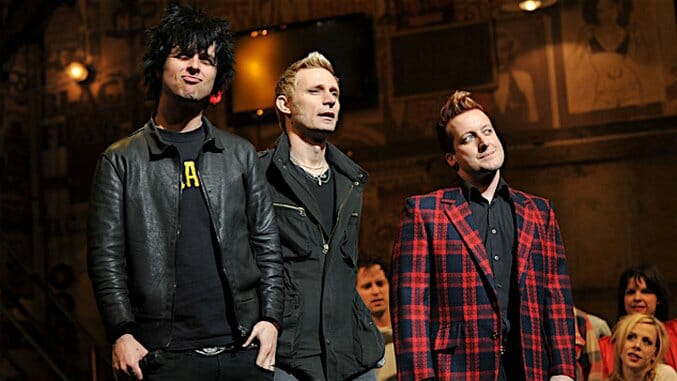Ranking Green Day’s 12 Albums
Photos by Bryan Bedder, Michael Buckner/Getty
For many 20-somethings, Green Day was possibly one of the first rock bands to really matter. Between 2004 and 2005, the five mighty singles from American Idiot were in heavy rotation on FM radio, providing a semi-regular exposure to pop-punk. The album was a cultural force, moving close to 300,000 copies in its first week and earning the band two Grammy’s, a Tony award-winning musical and now, a full blown HBO film adaptation.
Those, of course, are only the isolated results of their second career phase. A full decade before tinkering their sound to explode like a heart hand grenade, the trio of Billie Joe Armstrong, Mike Dirnt and Tré Cool (arguably one of the best rock n’ roll name combos ever) managed to break through the grunge wall with songs about cross dressers, murderous girlfriends and, of course, masturbation.
The following list ranks Green Day’s album from least to most essential and showcases the worst tendencies and best characteristics of one of the last great globe conquering rock bands.
12. ¡Uno!
¡Uno! was the first record after Idiot and the bloated 21st Century Breakdown to see the band take a breather and attempt at playing back to their no frills rock n’ roll strengths.
Perhaps allergic to the idea of attaching the Green Day band name to anything less than epic, the trio decided that its return to form would be best spread extra-thin as a trilogy of records released only months apart from one another
What seemed like an already risky gamble looked especially grim after the release of ¡Uno!. What was marketed as effortless and revitalized instead sounds flat and lifeless.
On “Let Yourself Go,” the band squarely doesn’t. “Carpe Diem” claims to be a battle cry but opts for playing it safe and predictable. On “Kill the DJ,” the band frustratingly commits to an actual four-on-the-floor disco song.
The best of the bunch is opener “Nuclear Family” which teases toward an explosive launch for the rest of album. Instead, fans were handed 11 tracks of what later turned out to be a rock n’ roll mid-life crisis.
11. 21st Century Breakdown
While it’s a long stretch to say Green Day “grew up” on American Idiot, that album’s stabs at sharp political commentary and arena-ready material showed a band no longer interested in simply ripping through three chords and calling it a single.
Idiot’s successor, 21st Century Breakdown, is the worst extension of that instinct. The exhausting album sounds less like rock opera and more like punk-prog, an overstuffed Frankenstein’s monster delivered in three awful acts.
-

-

-

-

-

-

-

-

-

-

-

-

-

-

-

-

-

-

-

-

-

-

-

-

-

-

-

-

-

-

-

-

-

-

-

-

-

-

-

-








































